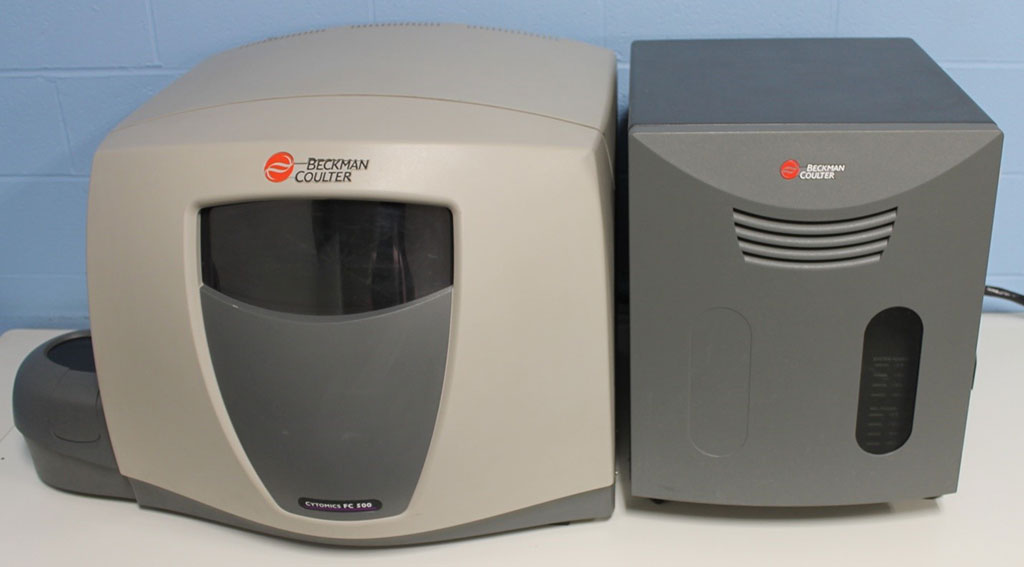T-Cell CD27 Expression Assessed for Smear-Negative Tuberculosis
By LabMedica International staff writers
Posted on 27 Jul 2021
Mycobacterium tuberculosis (MTB) and its related disease tuberculosis (TB) are infectious diseases with a worldwide focus. Although both vaccines and anti-TB drugs are available, there is a global focus on illness diagnosis in smear-negative and latent tuberculosis infectious populations (SN-TB and LTBI).Posted on 27 Jul 2021
To a great extent, the cell-mediated immune response is involved in and regulates MTB, and CD4 T cells are thought to play a significant role in controlling MTB infection. CD27, a member of the TNF-receptor superfamily, is inextricably expressed on the mature pathogen-specific CD4+ T cell surface.

Image: The Cytomics FC500 Flow Cytometer System (Photo courtesy of Beckman Coulter Life Sciences)
Pathogen Biologists at Nantong University (Nantong, China) and their colleagues include in a study 56 SN-TB patients, all had negative detection of sputum at least three times and sputum negative-culture results; an human control (HC) group that included 34 participants with no exposure to MTB and no clinical characteristics of TB, and the Tuberculosis Skin Test (PPD) test was negative; and 46 doctors and nurses working closely with TB patients for at least 1 year (TB-C group.)
All 56 smear-negative TB patients included in the study had peripheral blood collected and sputum collected at least three times for Ziehl-Neelsen acid-fast stain. Sputum culture was carried out by BACTEC MGIT 960 (Becton Dickinson, Sparks, MD, USA), liquid culture isolates using the GenoTypeH test system (Hain Lifescience, Nehren, Germany) and improved L-J culture medium. T-SPOT (tuberculosis infectious T-lymphocyte spot assay, Oxford Immunotec, Abingdon, UK) results were obtained from the clinical laboratory. For detection of the whole blood cell surface markers “CD27−CD4+” T cells, cells were collected, washed and analyzed by a Beckman Coulter FC500 flow cytometry analysis system (Indianapolis, IN, USA).
The scientists observed that the percentages of “CD27−IFN-γ+CD4+” cells were significantly increased in the SN-TB group compared with the HC and TB-C groups (AUC was 0.88, sensitivity was 82.14%, and specificity was 80.0%). The percentage of “CD27−IFN-γ+CD4+” cells was negatively correlated with white blood cell count (WBC) and positively correlated with immunoglobulin E (IgE). Furthermore, “CD27−IFN-γ+CD4+” cells were significantly decreased, especially in the > 50 years group, after clinical treatment.
The authors concluded that they had demonstrated the increased expression of “CD27−IFN-γ+CD4+” cells in smear-negative TB patients and evaluated its changes after normal anti-TB therapy. These data suggested that “CD27−IFN-γ+CD4+” T cells could be used to assist the diagnosis of TB and more accurately evaluate the treatment outcome of smear-negative TB. The study was published on June 27, 2021 in the journal BMC Immunology.
Related Links:
Nantong University
Becton Dickinson
Hain Lifescience
Oxford Immunotec
Beckman Coulter













